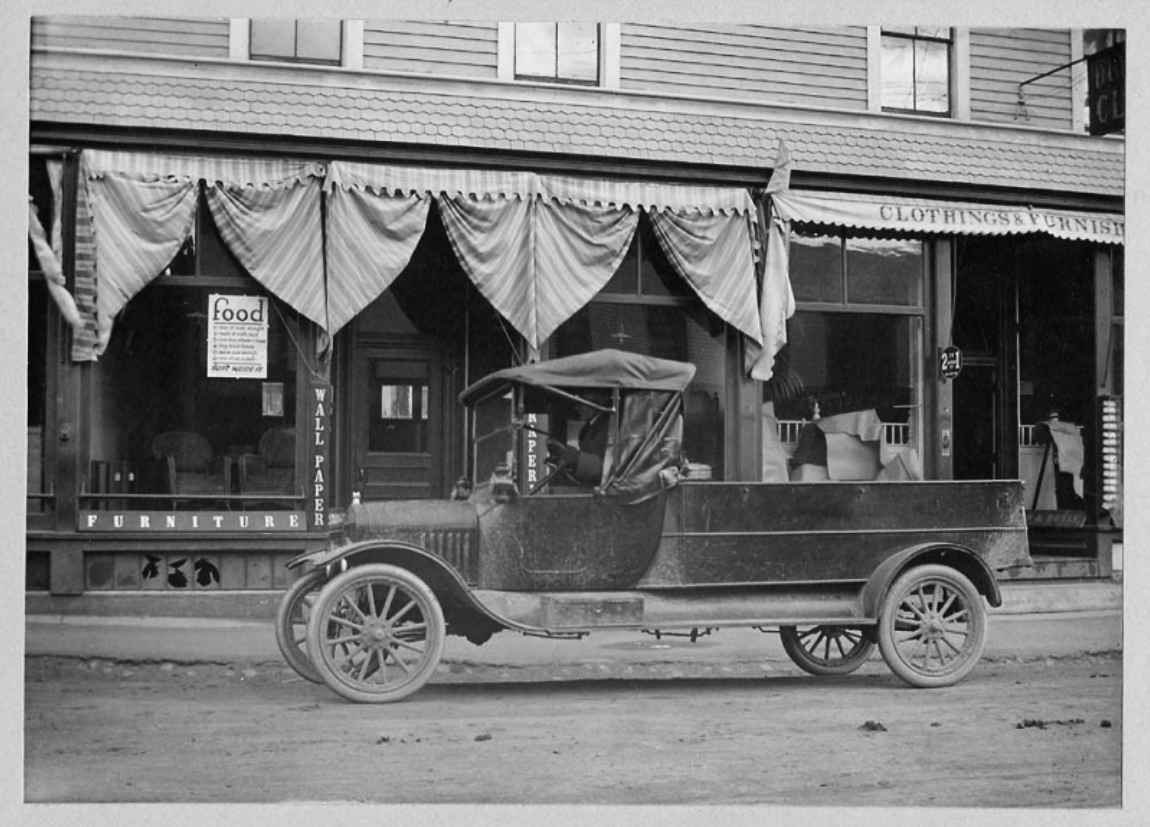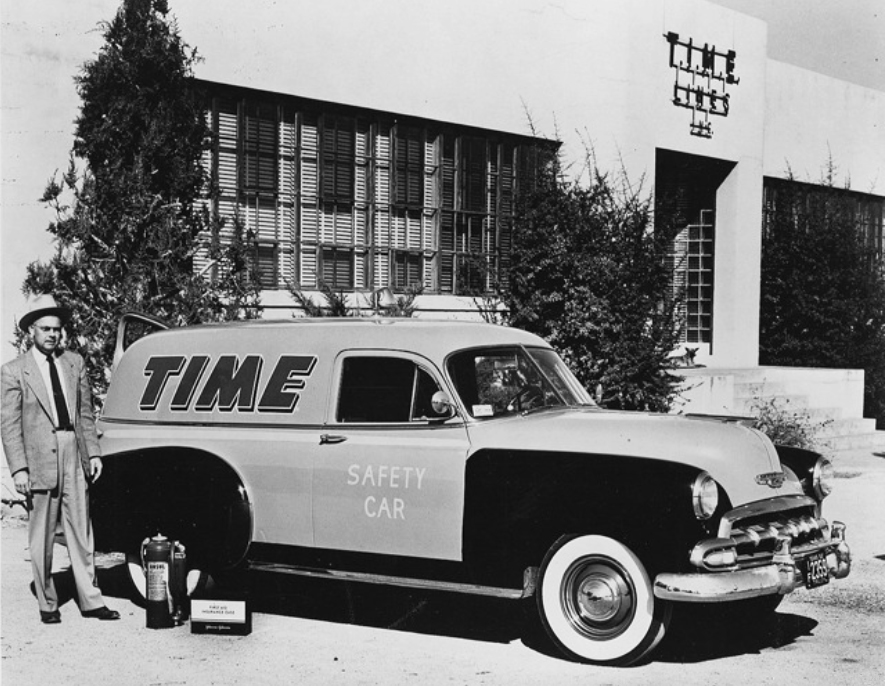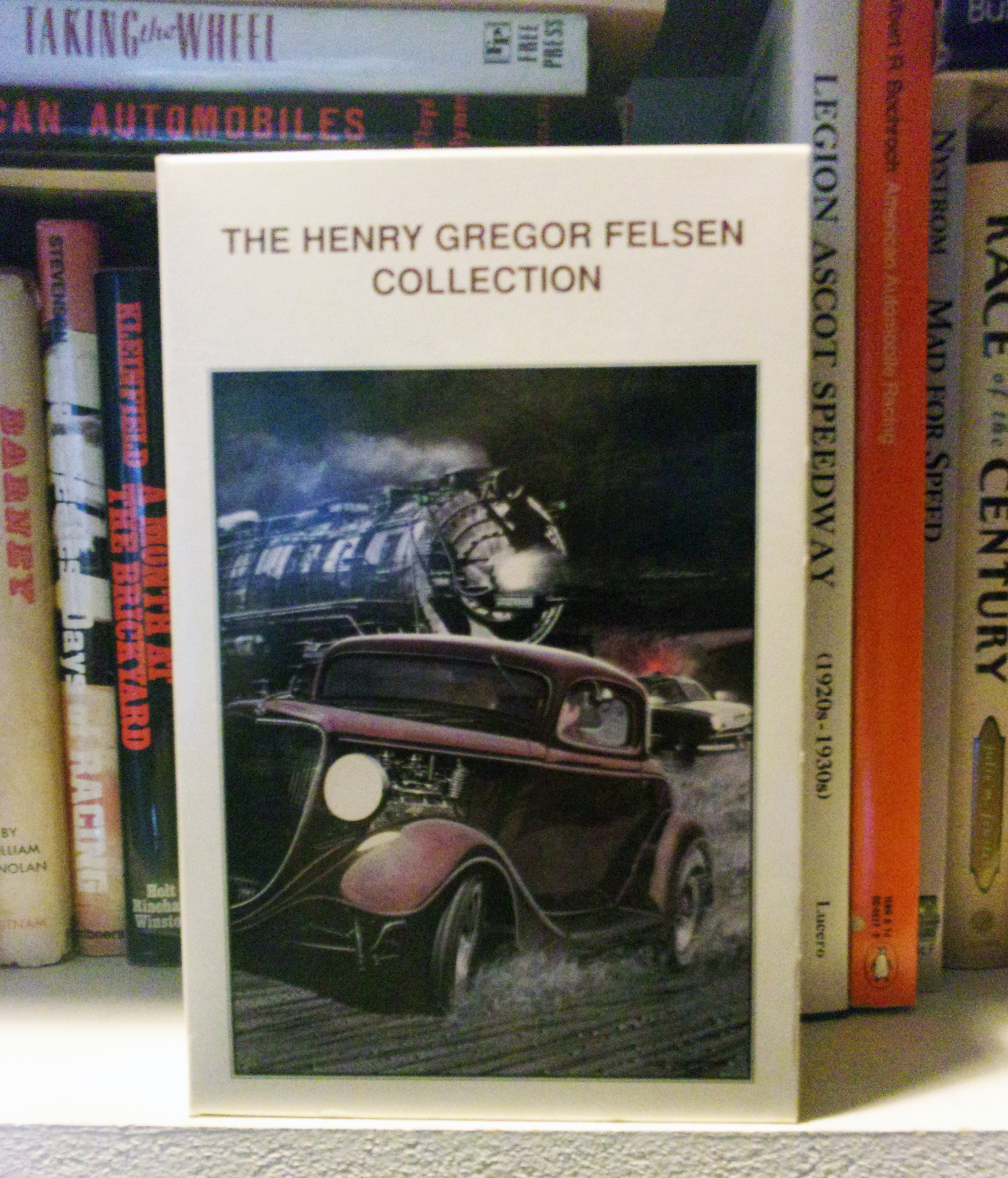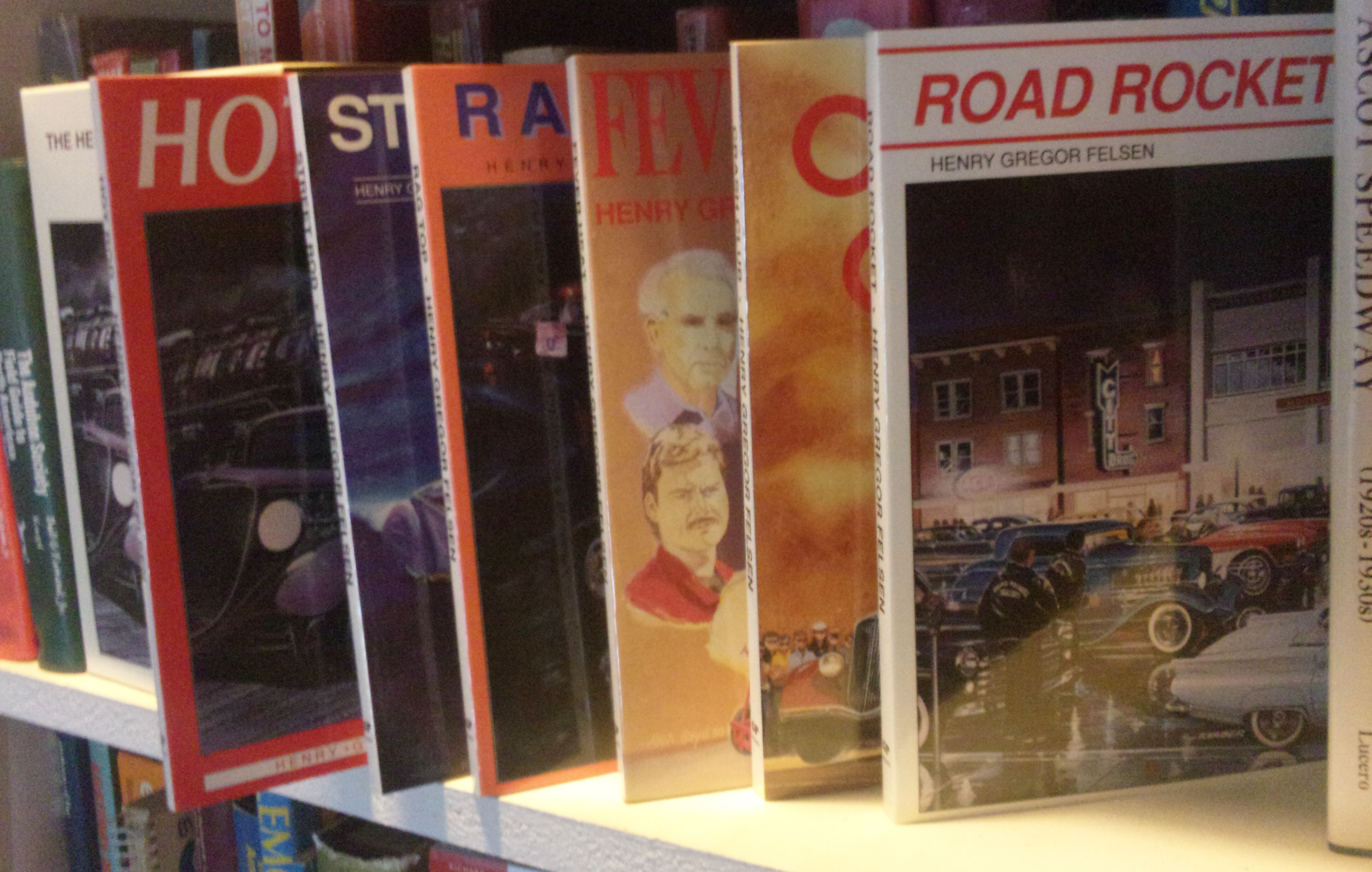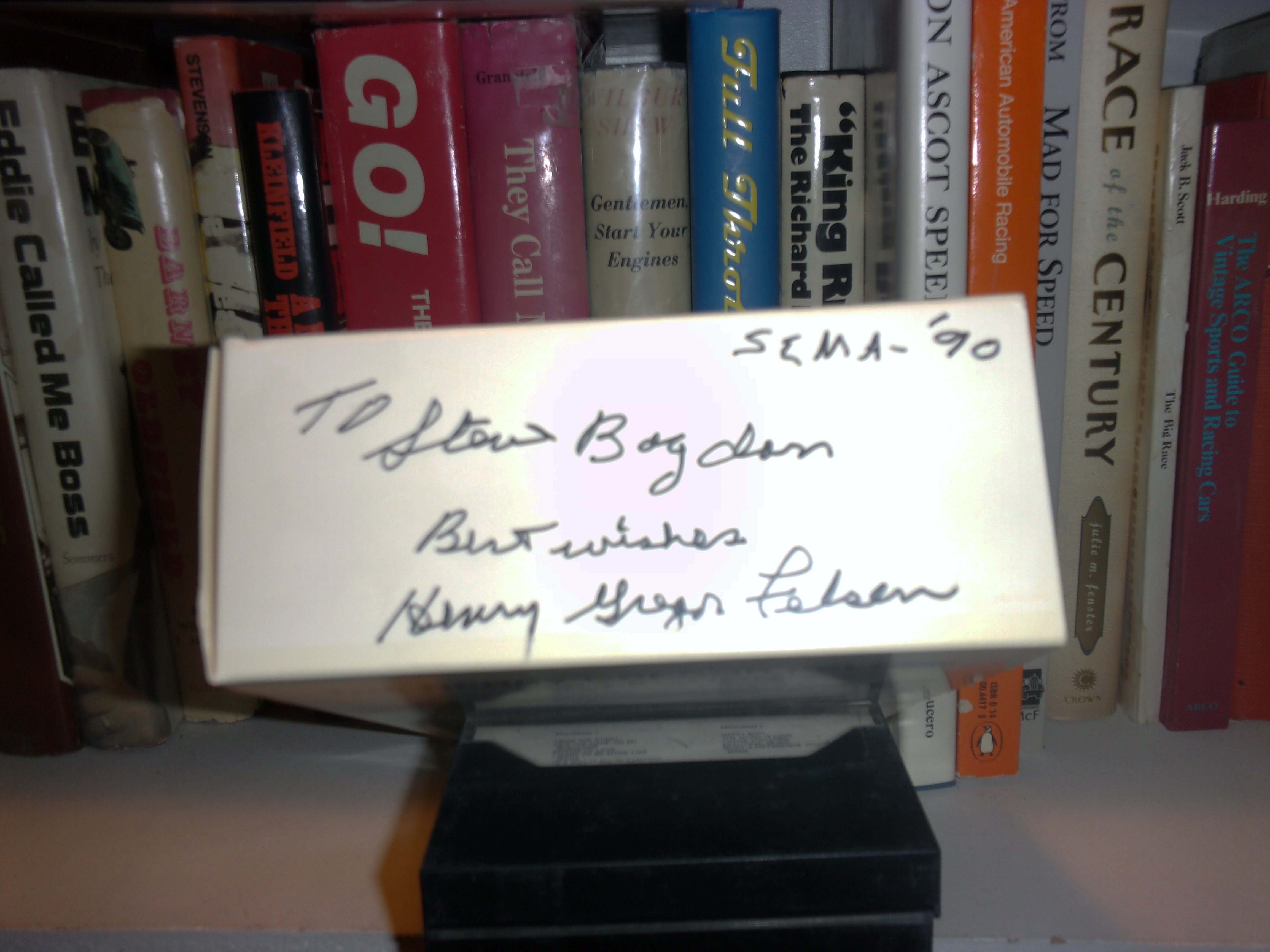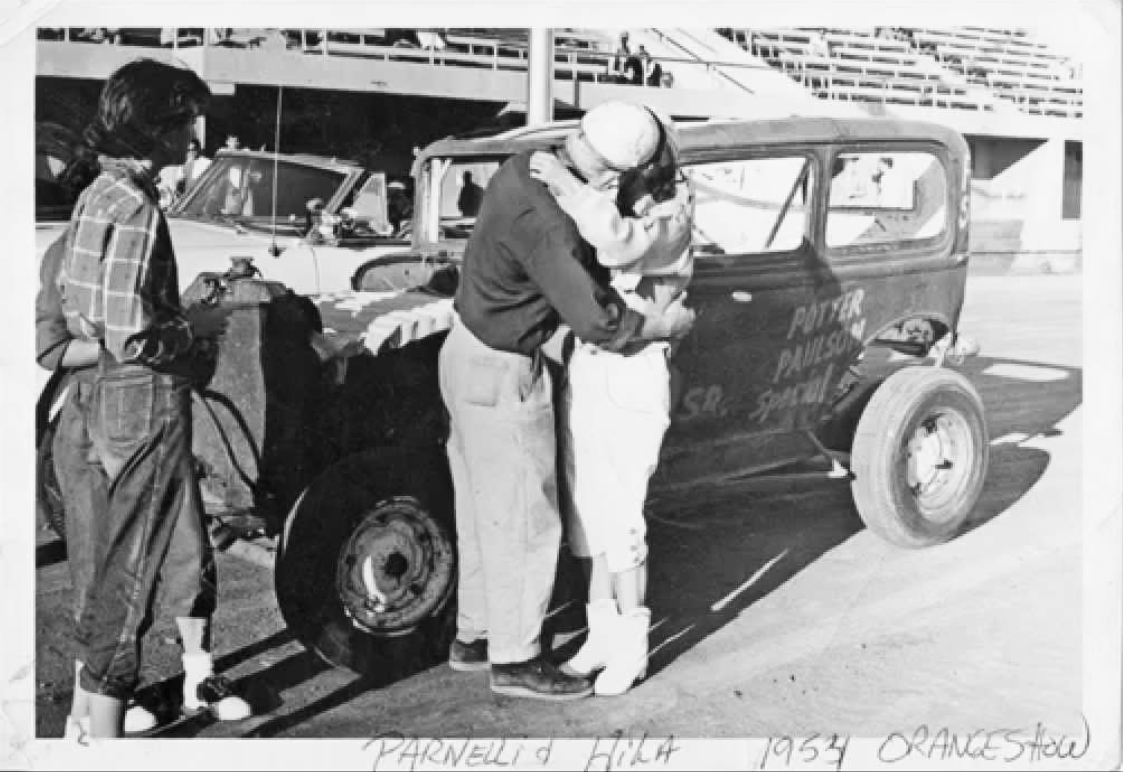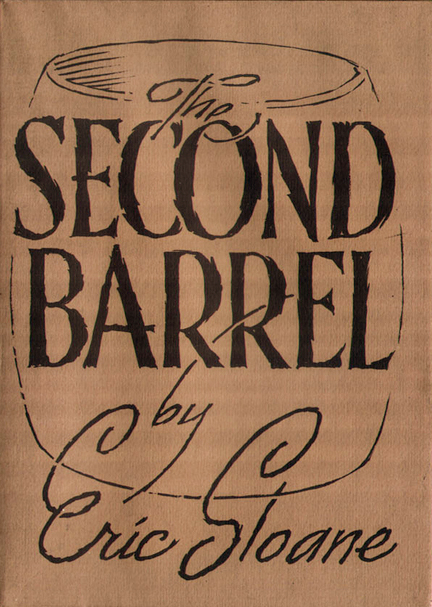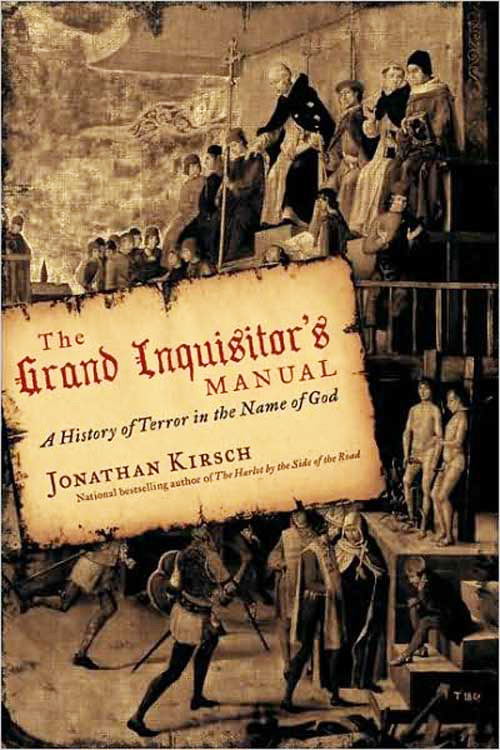
Books I'm reading, with photos and thoughts that I share with friends. And now you too. You get what you pay for.
Monday, October 31, 2016
Friday, October 28, 2016
Fearless Friday 10/28/16
Fred O. "Fearless" Gregg, Showman.
Yesterday Jesse over at justacarguy put this 1935 photo of "Fearless" Gregg's "Autos That Pass In The Air" stunt being set up, having found a post from August by Speedboys, who found it on Bill Greene's Flickr page, where he posted it back in 2007. In all the time that it's been up, only the Speedboys and Jesse have reposted it that I can find.
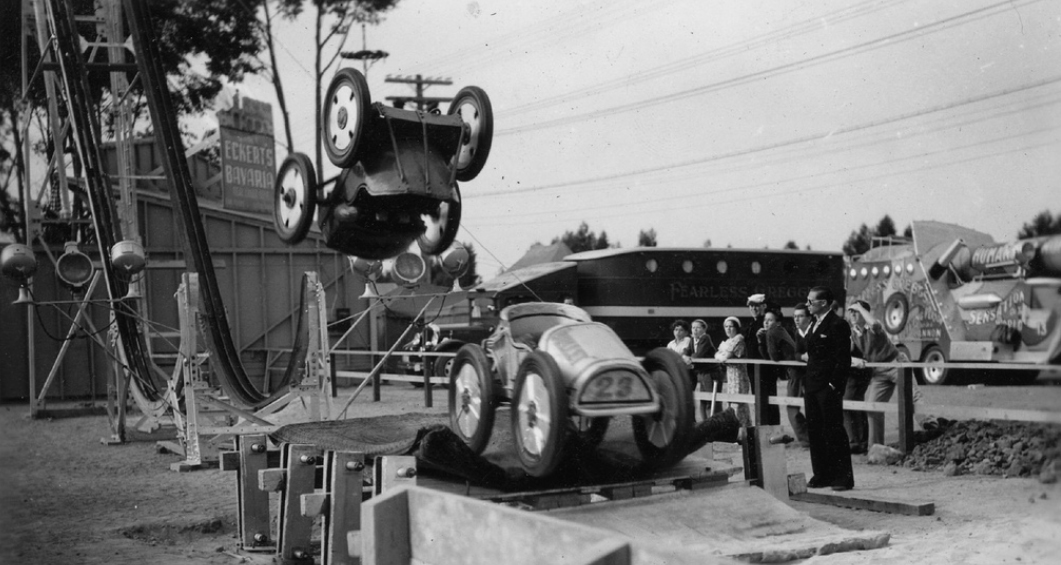

By 1935 Gregg had been performing this particular stunt for some time.

From the July 27, 1914 issue of The Lincoln Daily Star (Nebraska).
Jesse actually had a complete post about the stunt back a couple of years ago. Bill's page has a nice discussion with relatives of Fred and his wife Bette.
Yesterday Jesse over at justacarguy put this 1935 photo of "Fearless" Gregg's "Autos That Pass In The Air" stunt being set up, having found a post from August by Speedboys, who found it on Bill Greene's Flickr page, where he posted it back in 2007. In all the time that it's been up, only the Speedboys and Jesse have reposted it that I can find.


By 1935 Gregg had been performing this particular stunt for some time.

Jesse actually had a complete post about the stunt back a couple of years ago. Bill's page has a nice discussion with relatives of Fred and his wife Bette.
Wednesday, October 26, 2016
Monday, October 24, 2016
More June and Her Motorcycle Monday 10/24/16
Followup to last Monday's post about June Antonoff (née Parker).
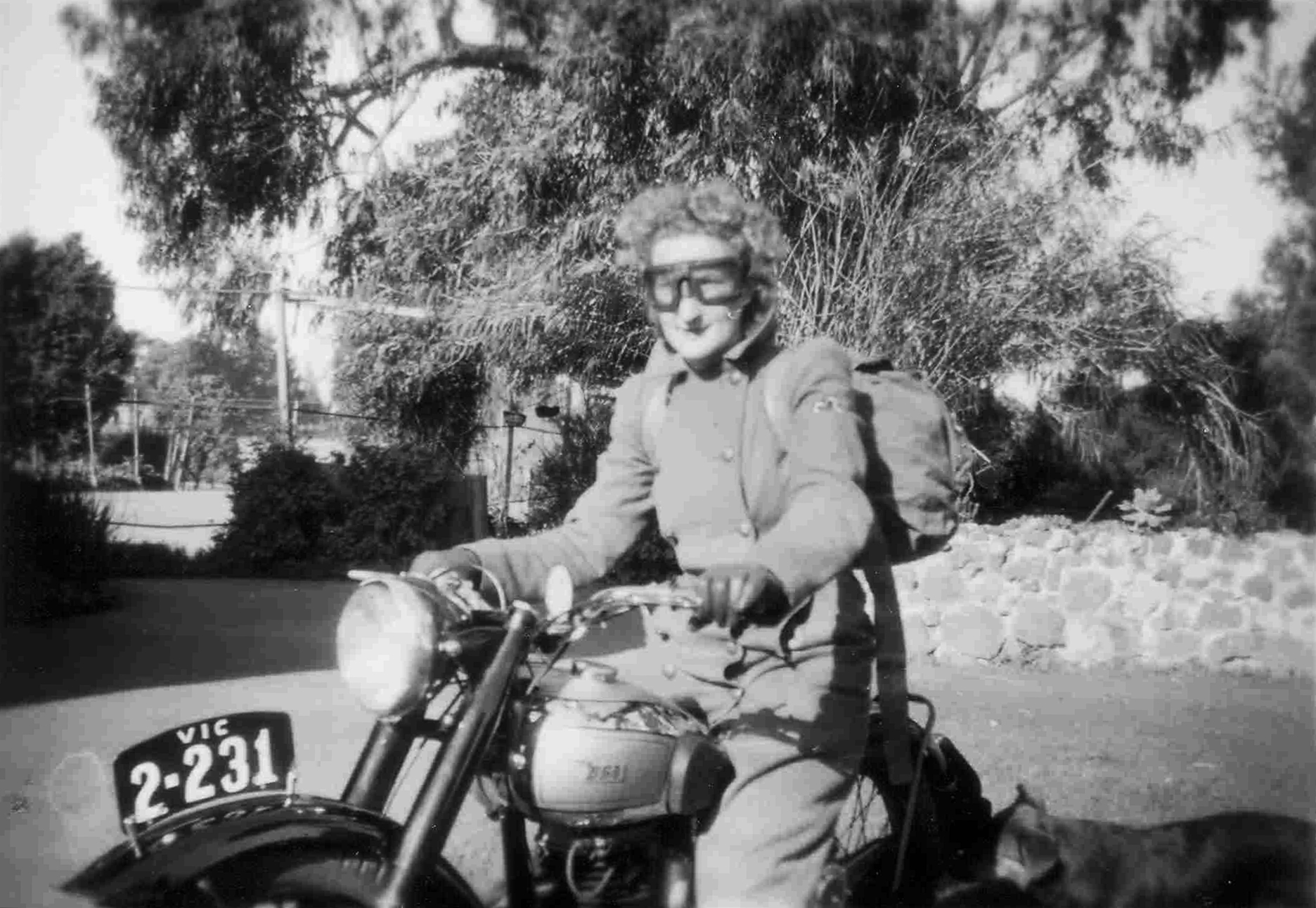
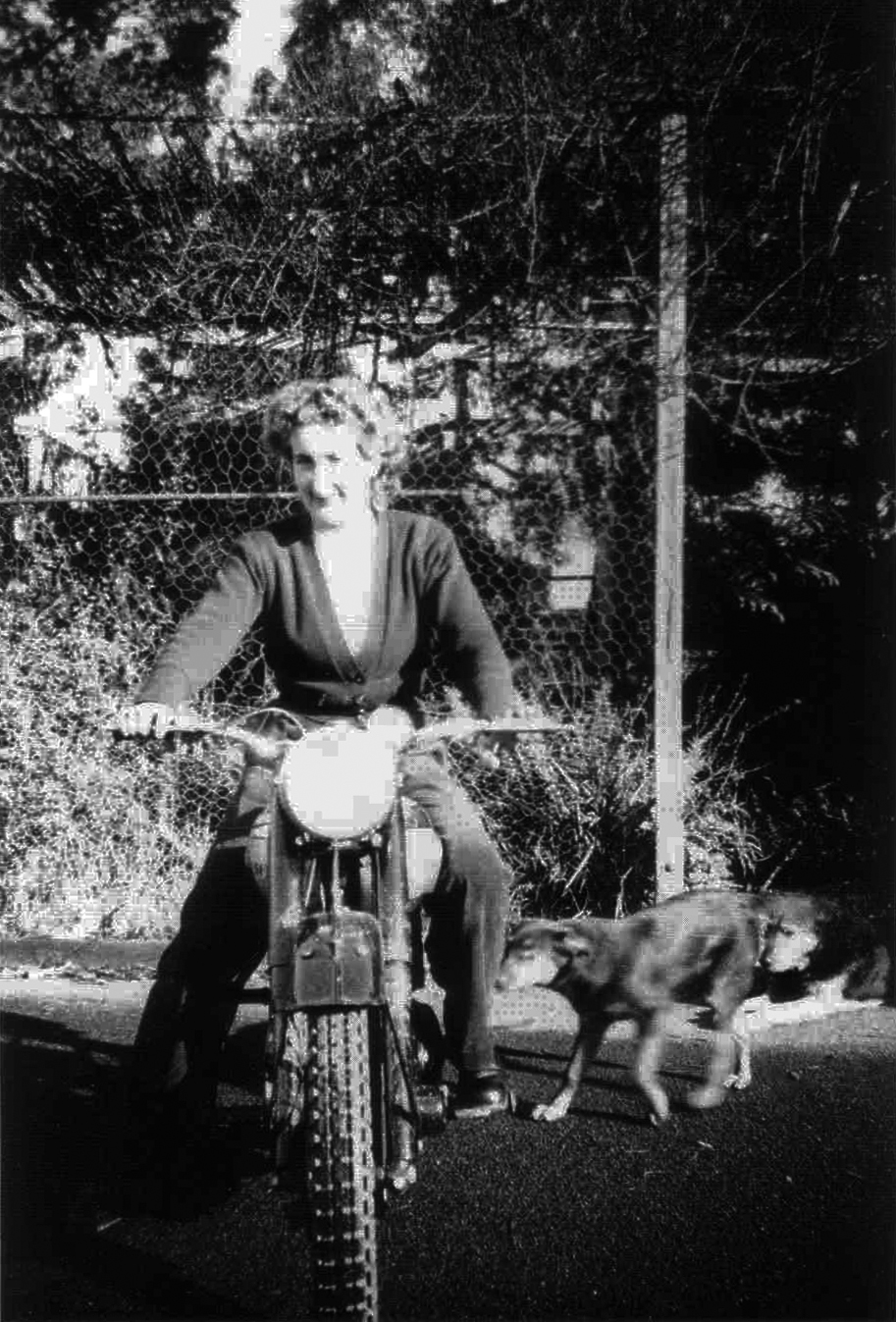
Photos courtesy of June's daughter Lesley Mitchell. More to come.


Photos courtesy of June's daughter Lesley Mitchell. More to come.
Sunday, October 23, 2016
Sidecar Sunday 10/23/16 (HBTM)
1930 Harley-Davidson Package Truck.
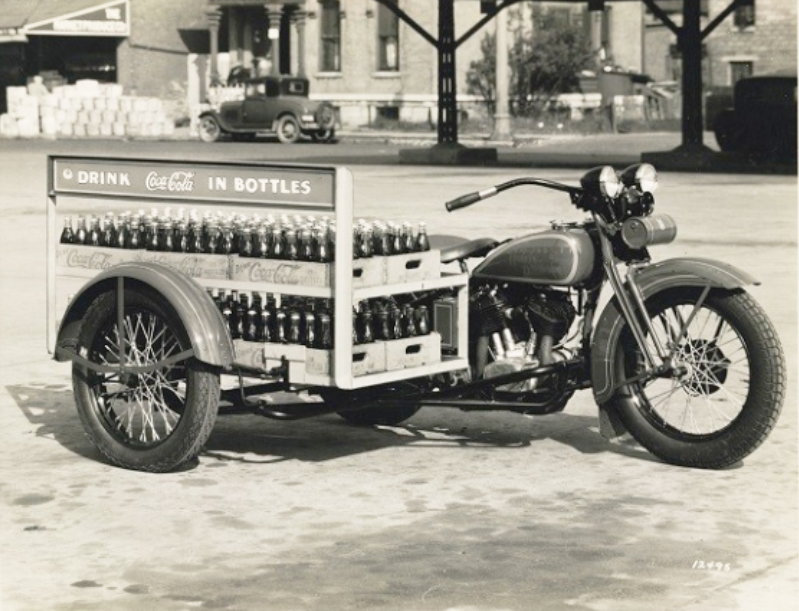
Photo from Harley-Davidson Motor Co. Archives, Milwaukee, Wisconsin
This from the Coca-Colawebsite (which includes the origin of the term "Hog" as it relates to motorcycles):

This from the Coca-Colawebsite (which includes the origin of the term "Hog" as it relates to motorcycles):
An oft-forgotten vehicle is the noble Package Truck. Think of a motorcycle with a sidecar chassis. But instead of a passenger cockpit, the chassis carried a cargo trunk. Package Trucks hold an honored place in the heritage of Harley-Davidson, having been used by postal carriers, florists, dry cleaners and just about every other type of business with a serious need to pick up or deliver their wares. In the spirit of H-D owners loving to customize their rides, cargo trunks often took on totally unique shapes and sizes. Among the one-of-a-kind custom carriers created in exotic shapes and varieties was a cow-shaped carrier used by a dairy. Others were more utilitarian than artistic. Package Truck buyers included Coca-Cola bottlers, but the extent of their use is undocumented.
Shown in the photo is a Package Truck proudly serving Coke bottles for a Milwaukee, Wisconsin Coca-Cola bottler in 1930. Package Trucks are among the longest tenured vehicles in H-D history, having spanned 1915 – the same year of the Coke bottle’s birth, incidentally – to 1957.
It is not known how much the bumpy roads shook up the bottles of Coke.
Saturday, October 22, 2016
On The Nightstand
Friday, October 21, 2016
Thursday, October 20, 2016
Three-Wheeler Thursday 10/20/16
Original Steampunks Kim Oman, Frank Baumgartner, and camera-shy Andrew Kozinsky build a car, and the Associated Press sends out a wire-story that was eventually picked up by Popular Science magazine.

From the June, 1940 issue of Popular Sciencemagazine
But the lads had been steaming for some time before Popular Science went to press, as various newspapers ran with the AP copy well in advance of the magazine's 3-month publishing lead time. This from the March 4 edition of Journal-Every Evening (The News Journal) of Wilmington, Delaware:
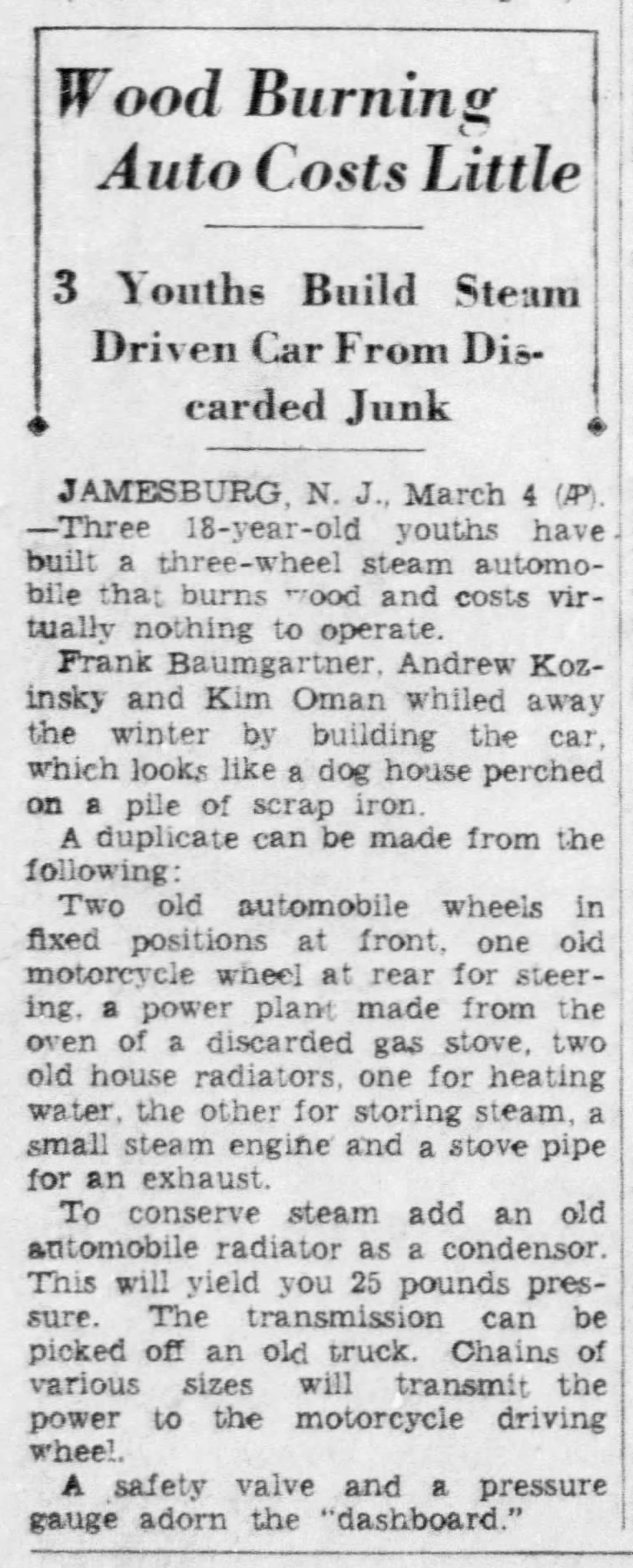
On the same day the Asbury Park Press ran the same article under the title "Trio Builds Steam Auto," as did the Wilkes-Barre Times Leader-The Evening News under the heading "Boys Build Steam Car To Burn Wood, Operates Cheaply." Then, on March 19, 1940 the Journal-Every Evening returned to the story and published the same photo that would appear in Popular Science:
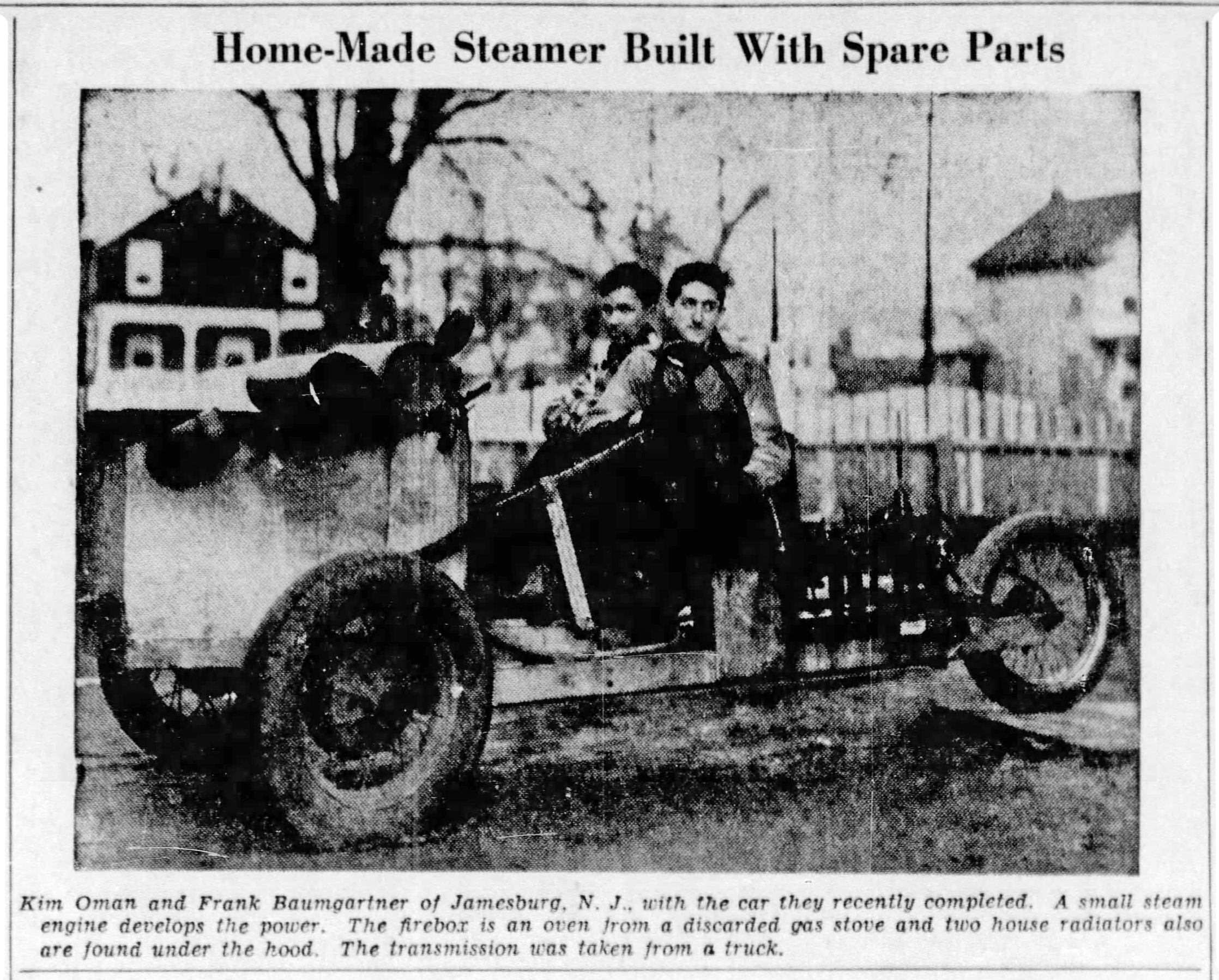
On the same day The Bee of Danville, Virginia ran the same photo and caption on their "Pictorial News of the Day" page under the heading "New Jersey Boys Build Land Steamer From Spare Parts."
Popular Science notwithstanding, the big moment of glory for the lads—at least for Kim and Frank— came when Roland Jack Scott (known professionally as R. J. Scott) immortalized them in his syndicated Scott's Scrap Book (published from 1931 until circa 1967), which copied its concept from Ripley's Believe It or Not. This cartoon panel is from the May 22, 1940 edition of The Logan Daily News in Ohio:

There are other news items out there, but you get the idea.

But the lads had been steaming for some time before Popular Science went to press, as various newspapers ran with the AP copy well in advance of the magazine's 3-month publishing lead time. This from the March 4 edition of Journal-Every Evening (The News Journal) of Wilmington, Delaware:

On the same day the Asbury Park Press ran the same article under the title "Trio Builds Steam Auto," as did the Wilkes-Barre Times Leader-The Evening News under the heading "Boys Build Steam Car To Burn Wood, Operates Cheaply." Then, on March 19, 1940 the Journal-Every Evening returned to the story and published the same photo that would appear in Popular Science:

On the same day The Bee of Danville, Virginia ran the same photo and caption on their "Pictorial News of the Day" page under the heading "New Jersey Boys Build Land Steamer From Spare Parts."
Popular Science notwithstanding, the big moment of glory for the lads—at least for Kim and Frank— came when Roland Jack Scott (known professionally as R. J. Scott) immortalized them in his syndicated Scott's Scrap Book (published from 1931 until circa 1967), which copied its concept from Ripley's Believe It or Not. This cartoon panel is from the May 22, 1940 edition of The Logan Daily News in Ohio:

There are other news items out there, but you get the idea.
Wednesday, October 19, 2016
Tuesday, October 18, 2016
Trailer Tuesday 10/18/16
Billy, the Hot Rod, and the Trailerette.
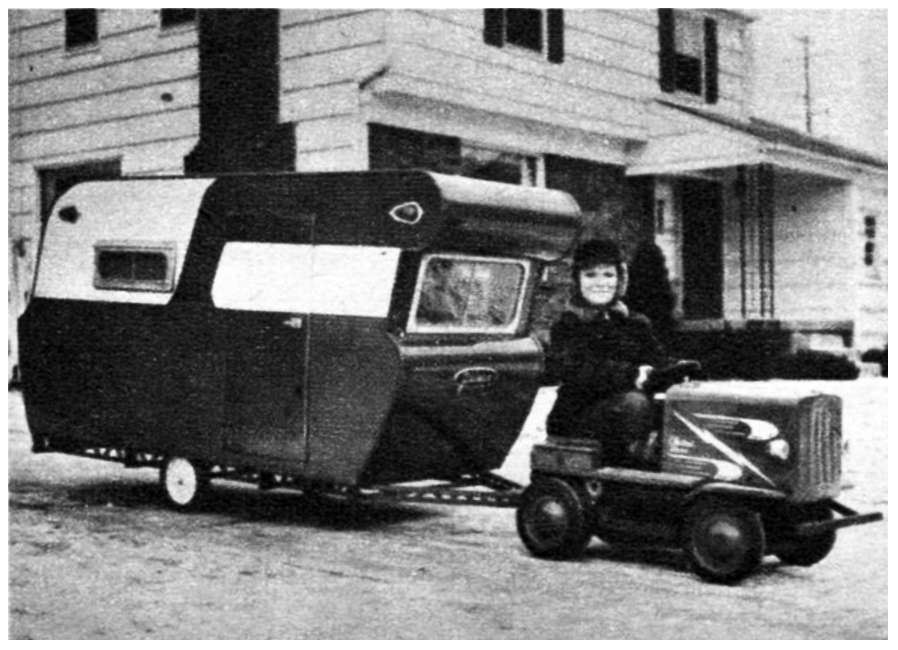
From the May, 1954 issue of Mechanix Illustrated via Modern Mechanix Blog
Original caption:

Original caption:
TRAILERETTE built by Charles Rucker of Flint Mich., for his seven year-old son, Billy, is 32 inches wide and 40 inches high. Billy hauls it around with his battery-powered “hot rod.”
Monday, October 17, 2016
Monday Melbourne Motorcycle Maidens 10/17/16
Two members of the Melbourne-based Militors and a German motorcycle—a 1939 Zündapp DB 200. Circa 1941
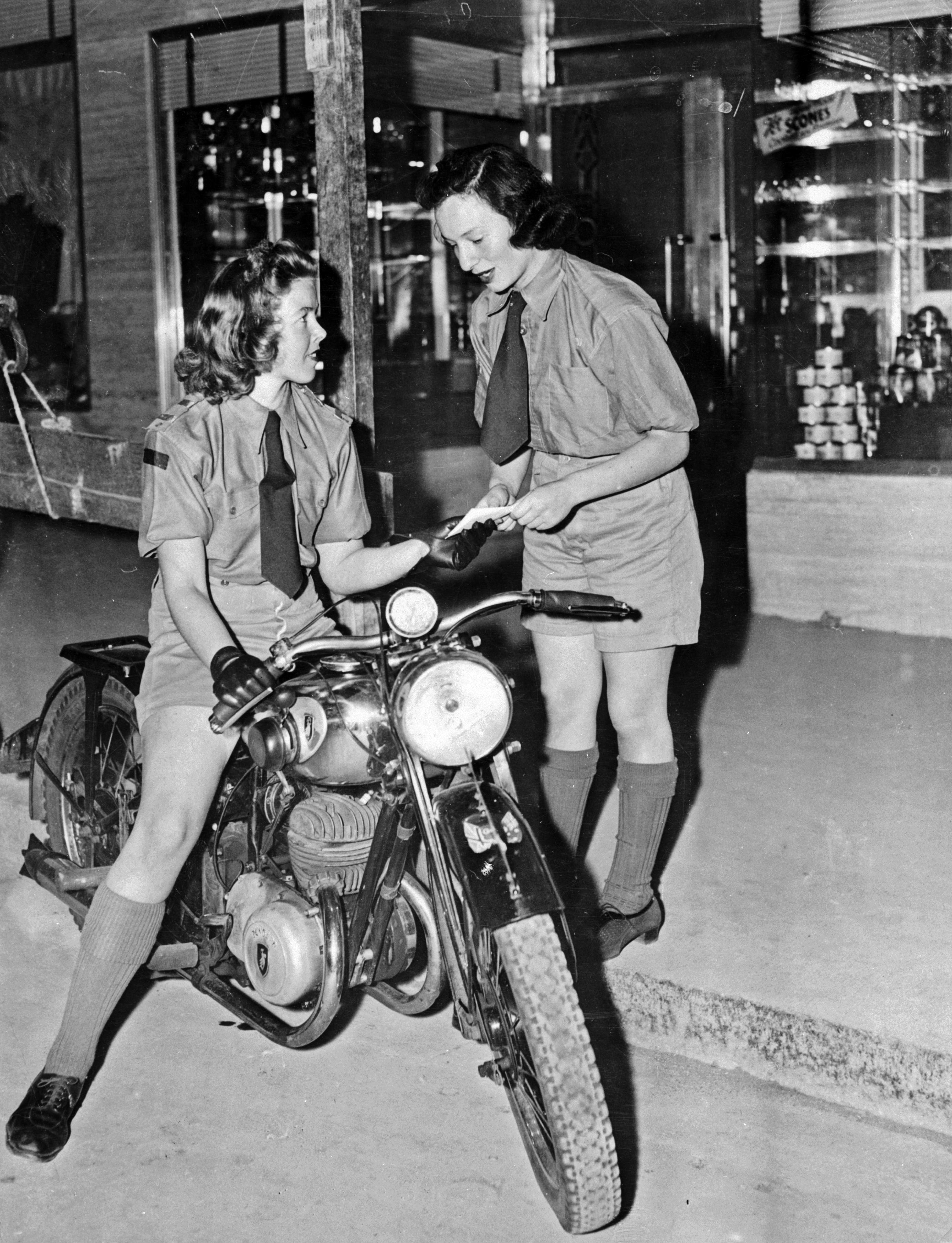
Photo from State Library Victoria
From Wartime Associated Heritage by National Trusts of Australia:

In Germany, the Zündapp Derby series DB 200 was nicknamed "the farm motorcycle." It had a single-cylinder, 2-stroke, air cooled, 198cc engine, with front and rear drum brakes, six volt battery ignition, with the shifter on the side of the tank. In production from 1935 to 1940,and again from 1947 to 1951, some 96,499 were produced.
Meanwhile, eight years later...
Pat Hansford (left) riding a circa 1949 125cc BSA Bantam D1 (available in any color you want, as long as it's Mist Green), and June Parker on a silver circa 1940 250cc BSA C11, tour Victoria, Australia as volunteers selling raffle tickets to aid the building fund of the Middle Park sub-branch of the Returned Soldiers' League.
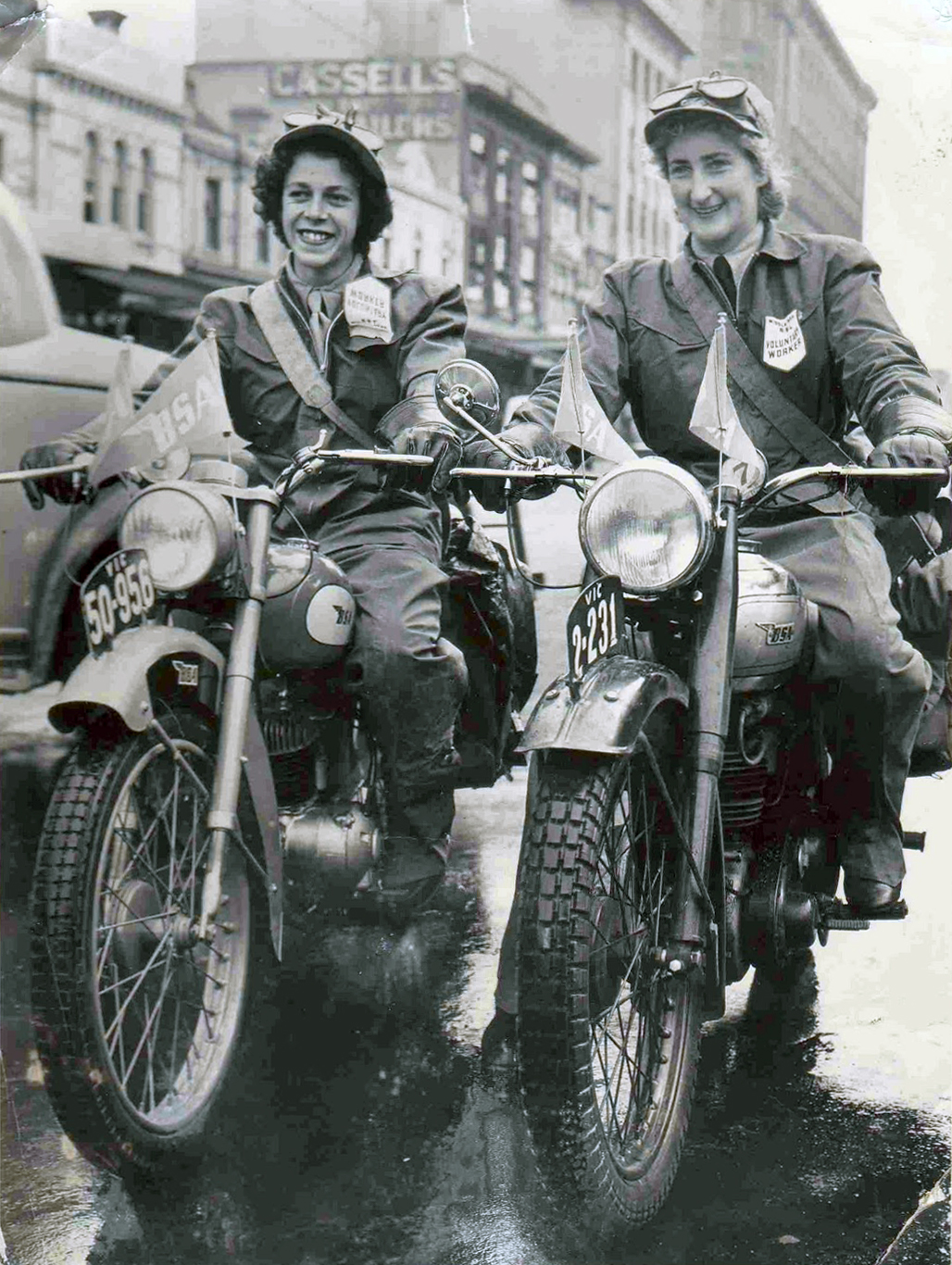
Photo from Lesley Mitchell via Weekend Notes
The photo above appears to have been taken during the same photo shoot as the one below for The Mirror newspaper:
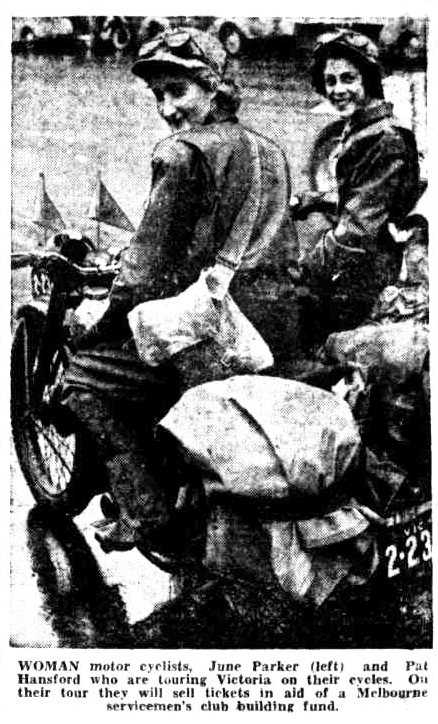
From the Saturday, April 9, 1949 issue of The Mirror (Perth) newspaper.
Actually, the volunteer tour around Victoria was pretty much a one-woman show. June and Pat had begun the journey in March—just a month before their picture was taken by The Mirror. Shortly after that photo, Pat was injured in a car collision, and June continued the tour alone.
According to similar articles appearing one month to the day apart—one in the July 19, 1949 edition of The Camperdown Chronicle, and the other in the August 19 issue of The Horsham Times—June Holroyd Parker, daughter of the former three-time mayor of Ringwood, joined the Land Army at the age of 15. After the war she continued outdoor life and did seasonal work such as fruit picking and tree pruning for about three months each year. She would then take an extended vacation. In 1948 she used that time off to cover a large swath of land while volunteer fundraising for the Red Cross, gaining £500 for the organization. This she did by hitchhiking from town-to-town, which prompted her to buy the motorcycle.
During her raffle ticket selling tour she camped out and preformed her own repairs. In the year since she bought the "Beesa" she did not have a single mishap while traveling every day—except when she climbed on a bicycle for first time in months and fell off, breaking her collarbone. By the time she got to Camperdown (on the back of a wood truck, since the motorcycle had suffered a puncture severe enough that she needed a new tube) she had a total of 10,000 miles on her BSA, and had sold £550 worth of raffle tickets towards her personal goal of £1000 worth. When she hit Horsham she had added 1,000 miles and £250 respectively to her totals.
It was said that she had plans to do an "Australia-wide" tour starting the next December, but as of this writing I have no information as to whether or not that happened.
In the original picture above Pat is on a then-new circa 1949 125cc BSA Bantam D1, while June is on a older circa 1940 250cc BSA C11. In another photo that accompanies both of the articles in the The Camperdown Chronicle and The Horsham Times, June is astride a BSA Bantam D1, albeit with a different number plate. It is my guess that she acquired the Bantam from Pat after Pat's unfortunate accident, so that she would have a newer, more trouble free motorcycle with which to complete her goal.
BSA experts please feel free to correct me.
Oh, and the raffle prizes? Nothing short of phenomenal:

From page 4 of the Saturday, December 17, 1949 issue of The Age newspaper (Melbourne).
NOTE: More photos here.

From Wartime Associated Heritage by National Trusts of Australia:
[One] paramilitary all-women organization was the Victorian based Militors. This group was formed in Melbourne in August 1940. The women who volunteered for this unit were generally of a younger age, fit and healthy and able to undertake training and discipline. Similar to the Women’s National Emergency Legion in Brisbane, the Militors were trained in first aid, military drill, rifle shooting, Morse Code communications, transport driving and other military skills. Training was often done under the supervision of male serving or reserve military personnel. By 1941 the Militors numbered about 300 volunteers. But there was little or no encouragement or support from the Government for the organization and by December of that year the Militors disbanded.The disbanding was announced in a small article buried on page six of the Friday, December 5, 1941 issue of The Argus newspaper (Melbourne):

In Germany, the Zündapp Derby series DB 200 was nicknamed "the farm motorcycle." It had a single-cylinder, 2-stroke, air cooled, 198cc engine, with front and rear drum brakes, six volt battery ignition, with the shifter on the side of the tank. In production from 1935 to 1940,and again from 1947 to 1951, some 96,499 were produced.
Meanwhile, eight years later...
Pat Hansford (left) riding a circa 1949 125cc BSA Bantam D1 (available in any color you want, as long as it's Mist Green), and June Parker on a silver circa 1940 250cc BSA C11, tour Victoria, Australia as volunteers selling raffle tickets to aid the building fund of the Middle Park sub-branch of the Returned Soldiers' League.

The photo above appears to have been taken during the same photo shoot as the one below for The Mirror newspaper:

Actually, the volunteer tour around Victoria was pretty much a one-woman show. June and Pat had begun the journey in March—just a month before their picture was taken by The Mirror. Shortly after that photo, Pat was injured in a car collision, and June continued the tour alone.
According to similar articles appearing one month to the day apart—one in the July 19, 1949 edition of The Camperdown Chronicle, and the other in the August 19 issue of The Horsham Times—June Holroyd Parker, daughter of the former three-time mayor of Ringwood, joined the Land Army at the age of 15. After the war she continued outdoor life and did seasonal work such as fruit picking and tree pruning for about three months each year. She would then take an extended vacation. In 1948 she used that time off to cover a large swath of land while volunteer fundraising for the Red Cross, gaining £500 for the organization. This she did by hitchhiking from town-to-town, which prompted her to buy the motorcycle.
During her raffle ticket selling tour she camped out and preformed her own repairs. In the year since she bought the "Beesa" she did not have a single mishap while traveling every day—except when she climbed on a bicycle for first time in months and fell off, breaking her collarbone. By the time she got to Camperdown (on the back of a wood truck, since the motorcycle had suffered a puncture severe enough that she needed a new tube) she had a total of 10,000 miles on her BSA, and had sold £550 worth of raffle tickets towards her personal goal of £1000 worth. When she hit Horsham she had added 1,000 miles and £250 respectively to her totals.
It was said that she had plans to do an "Australia-wide" tour starting the next December, but as of this writing I have no information as to whether or not that happened.
In the original picture above Pat is on a then-new circa 1949 125cc BSA Bantam D1, while June is on a older circa 1940 250cc BSA C11. In another photo that accompanies both of the articles in the The Camperdown Chronicle and The Horsham Times, June is astride a BSA Bantam D1, albeit with a different number plate. It is my guess that she acquired the Bantam from Pat after Pat's unfortunate accident, so that she would have a newer, more trouble free motorcycle with which to complete her goal.
BSA experts please feel free to correct me.
Oh, and the raffle prizes? Nothing short of phenomenal:

NOTE: More photos here.
Sunday, October 16, 2016
Street Sweeper Sunday 10/16/16
1913 Renault Balayeuse (Sweeper) Type DM
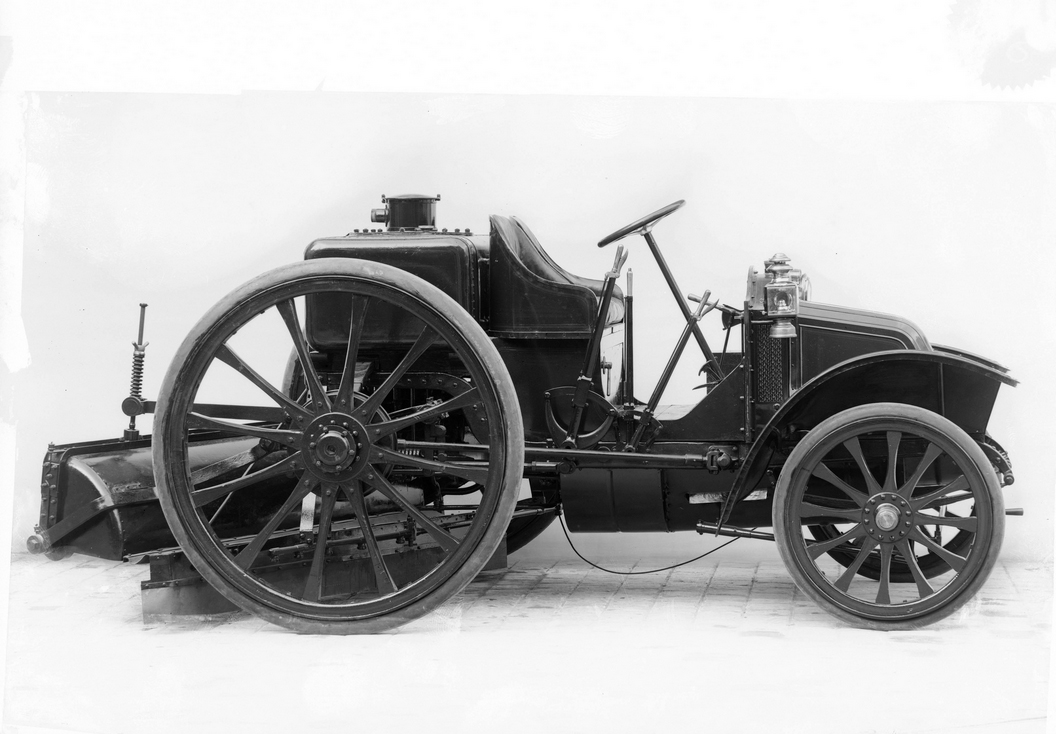
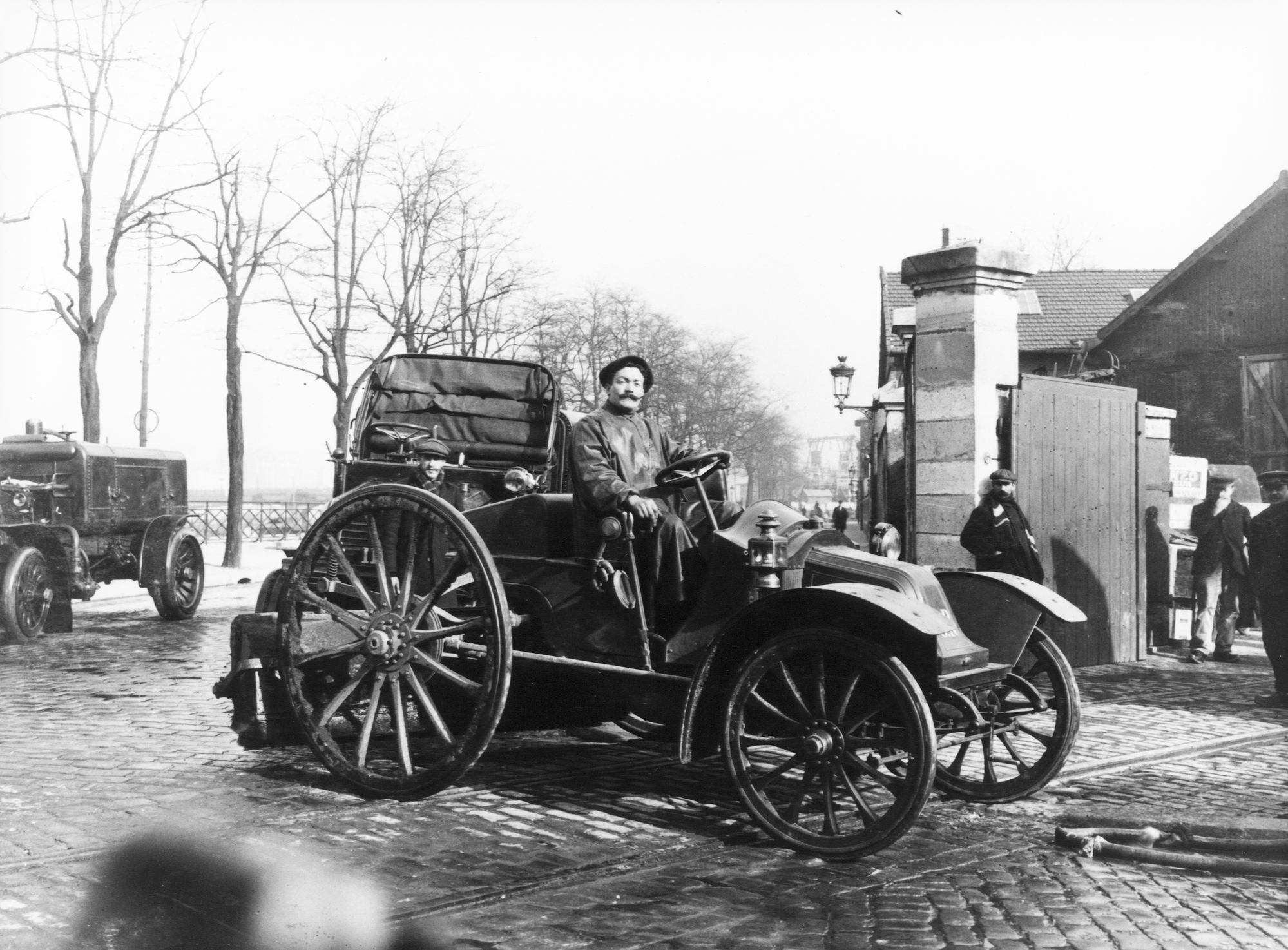
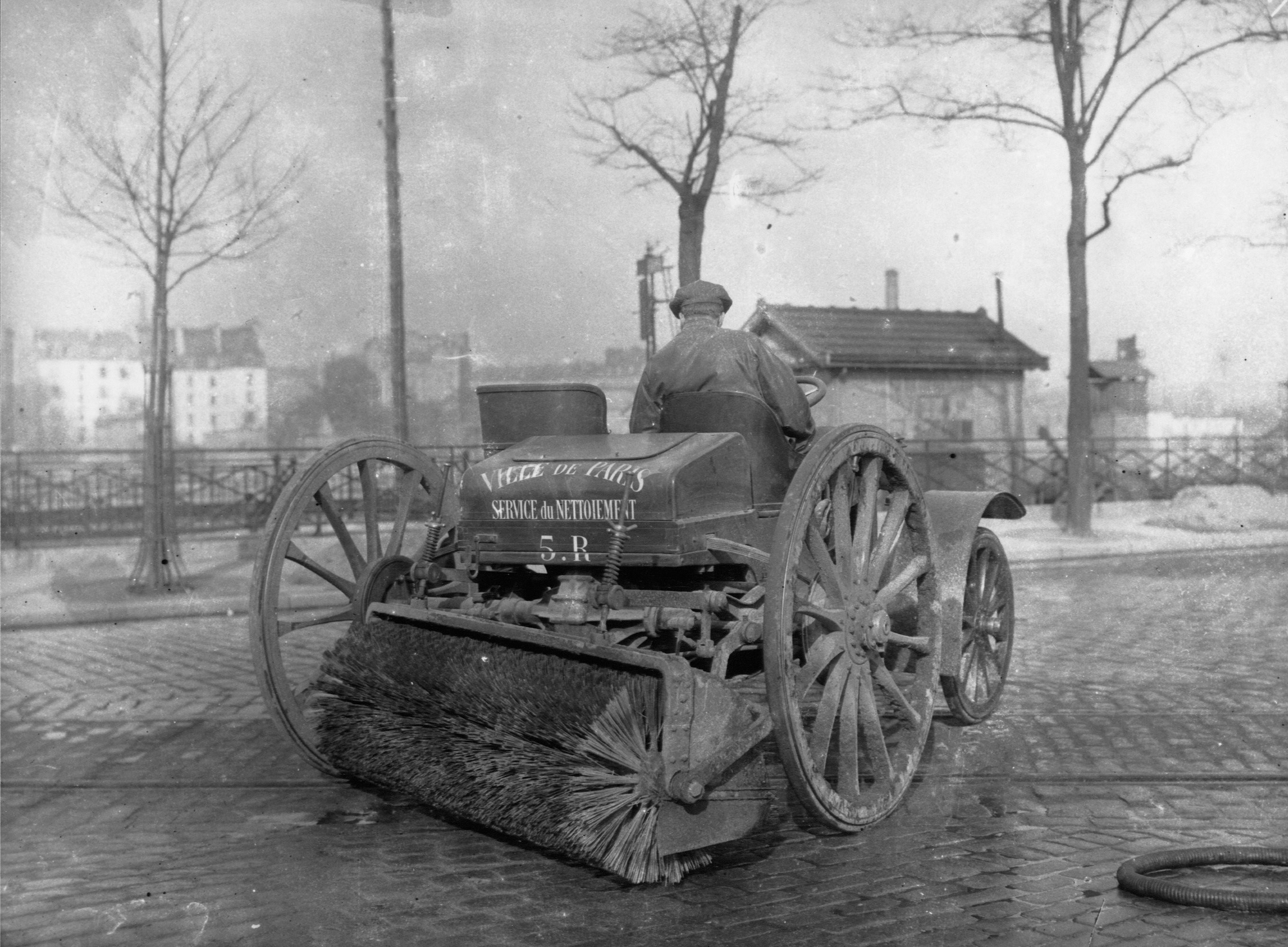
Here I was thinking that no one paid attention to old street sweepers (let alone garbage trucks) like they do vintage fire trucks or ambulances, when lo and behold, Jesse posted a couple of shots of a beautifully restored one of these over at justacarguy.
Photos from Renault via Autoviva/Salon Rétromobile/des Renault/extra-ordinaires/Slideshow.



Here I was thinking that no one paid attention to old street sweepers (let alone garbage trucks) like they do vintage fire trucks or ambulances, when lo and behold, Jesse posted a couple of shots of a beautifully restored one of these over at justacarguy.
Photos from Renault via Autoviva/Salon Rétromobile/des Renault/extra-ordinaires/Slideshow.
Saturday, October 15, 2016
Sedan Delivery Saturday 10/15/16
Margaret "Peggy" Peek (1925-2013) promoting the May 30, 1950 "Poor Man's Indianapolis Decoration Day 500 Lap Classic" at Carrell Speedway—a 500 lap (250 miles) race featuring 66 jalopies.
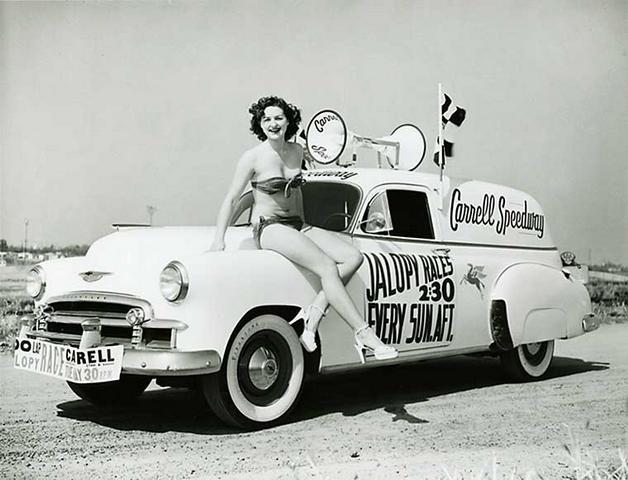

From the May 28, 1950 issue of the Long Beach Independent
First thought to be racing competitor Hila Sweet, until Hila herself named Peggy in this photo:
Peggy's son Gregg D. McClendon adds:

From the June 6, 1943 issue of the Long Beach Independent. Peggy is in the front row, third from the right


First thought to be racing competitor Hila Sweet, until Hila herself named Peggy in this photo:
[Although] I did lots of promotional publicity for Ascot in bikinis and tons of TV talk shows, I was never asked to do the Carrell publicity. Aggie's* secretary then was a gal named Peggy Peek who also drove in the "Powder Puffs" and they utilized her often. I had the dubious title of "Miss Ascot 1960" and did lots of photo sessions there for Walt Mahoney.*Joshua C. (Aggie) Agajanian, president of the Western Racing Association, took over duties at Carrell Speedway from Bill White in October 1947, acting as promoter for Emmett Malloy, who was the leasee of the track and operator for the Carrell estate. White returned as promoter in December 1949. Peggy worked for both.
Peggy's son Gregg D. McClendon adds:
She was Mr. White’s right hand person for years. She worked on track promotions, bookkeeping and all the other track business. She issued Parnelli Jones his first racing number.Peggy's first venture with fame on wheels—albeit not what you would expect—came not long after she and a girlfriend moved to California from Texas. Peggy settled in Long Beach and went to work for Sears when she was 18 years old. Early in the morning of Tuesday, June 1, 1943, Long Beach bus drivers went on strike seeking a raise in pay from an average of about 85 cents an hour to a rate of 90 cents to $1 per hour, in keeping with an industry standard. By Friday the strike was over, with the drivers pledging a 25-day truce to try and settle the dispute with no further interruption in service. The following Sunday the Long Beach Independent publish a photo showing how one determined group of commuters had handled the transportation stoppage. In the photo an even dozen female employees of the Long Beach Sears store are seen roller-skating their way to work. In the forefront is a beaming Margaret (Peggy) Peek.

Friday, October 14, 2016
Finished A Bit Ago
Heh, "My name is Potts. Caractacus Potts."
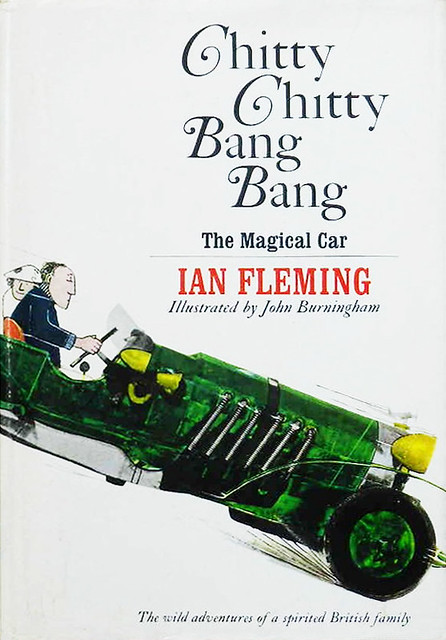
Chitty Chitty Bang Bang: The Magical Car by Ian Fleming
Original Dedication
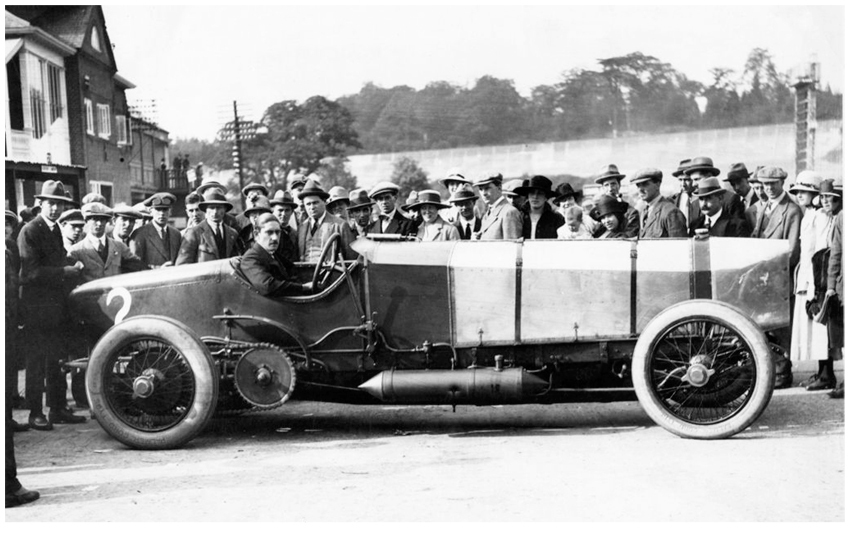
Chitty-Bang-Bang, with radiator cowl attached, at Brooklands
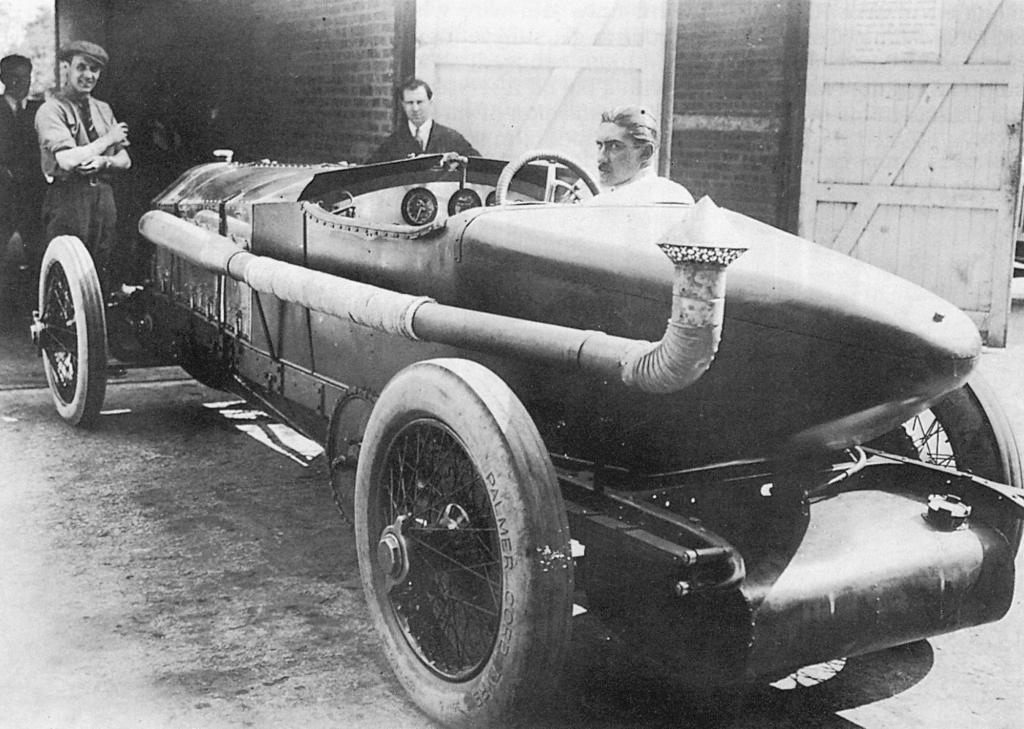
Above photo taken on May 14, 1921, after streamlining had been incorporated into the original build
Count Zborowski was practicing with Chitty-Bang-Bang (his name for the car) at Brooklands in 1922 when a tire blew. He hit the bridge on the Railway Straight just hard enough to spin the car around and shoot it off the track backwards. He smashed into a timing box, demolishing it. The timer dove into a ditch but still lost a couple of fingers as the car passed over him. The riding mechanic was thrown clear while the uninjured Count rode the car to a stop. Despite having the front axle torn off, Chitty-Bang-Bang was rebuilt.
Zborowski—who in 1923 raced a Bugatti at the Indianapolis 500, and a Miller in the Italian Grand Prix—went on to build and campaign two more Chittys. At 29 years-of-age, he had a fourth under construction when he died after hitting a tree during the 1924 Italian Grand Prix while driving a Mercedes for the factory team. It was 21 years after his father had been killed in a Mercedes 60 at the 1903 La Turbie Hill-climb.

These stories are affectionately dedicated to the memory of the original CHITTY-CHITTY-BANG-BANG, built in 1920 by Count Zborowski on his estate near Canterbury.
She had a pre-1914 war, chain-drive, seventy-five horsepower Mercedes chassis, in which was installed a six-cylinder Maybach aero engine—the military type used by the Germans in their Zeppelins.
Four vertical overhead valves per cylinder were operated by exposed push-rods, and rockers from a camshaft on each side of the crankcase, and two Zenith carburetors were attached, one at each end of a long induction pipe.
She had a gray steel body with an immense polished hood eight feet in length, and weighed over five tons.
In 1921, she won the Hundred M.P.H. Short Handicap at Brooklands at 101 miles per hour, and in 1922, again at Brooklands, the Lightning Short Handicap. But in that year she was involved in an accident* and the Count never raced her again.
I.F.
*This is a polite way of putting it. In fact, CHITTY-CHITTY-BANG-BANG suddenly went mad with rage about something, and with the Count at the wheel, got out of control and charged through the timing-hut, very fast, backwards!


Count Zborowski was practicing with Chitty-Bang-Bang (his name for the car) at Brooklands in 1922 when a tire blew. He hit the bridge on the Railway Straight just hard enough to spin the car around and shoot it off the track backwards. He smashed into a timing box, demolishing it. The timer dove into a ditch but still lost a couple of fingers as the car passed over him. The riding mechanic was thrown clear while the uninjured Count rode the car to a stop. Despite having the front axle torn off, Chitty-Bang-Bang was rebuilt.
Zborowski—who in 1923 raced a Bugatti at the Indianapolis 500, and a Miller in the Italian Grand Prix—went on to build and campaign two more Chittys. At 29 years-of-age, he had a fourth under construction when he died after hitting a tree during the 1924 Italian Grand Prix while driving a Mercedes for the factory team. It was 21 years after his father had been killed in a Mercedes 60 at the 1903 La Turbie Hill-climb.
Fire Fighting Friday 10/14/16
Now, I know a thing or three about vintage fire trucks, but Chicago never fails to stump me—I'd never seen one of these and had no idea what it was when I came across the unattributed photo 0n the internet.
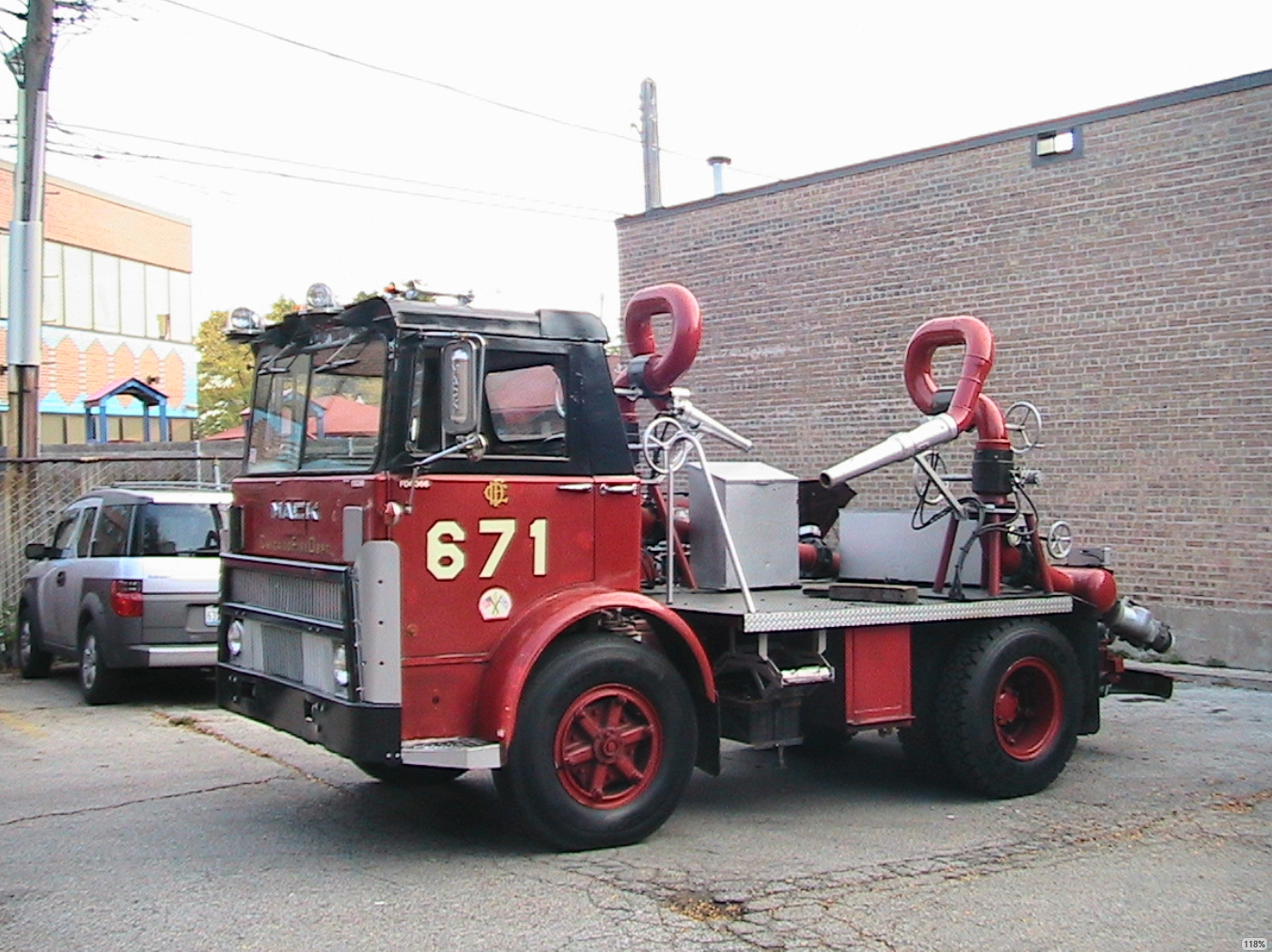
Since then I've learned that it is a 1975 Mack Turret Wagon equipped with "twin stang hydraulic high pressure deluge monitors capable of flowing 20,000-gpm." That is serious water flowing.

From chicagoareafire.com
Then I found out that it was placed permanently out of service in 2011, and auctioned off in February, 2016.
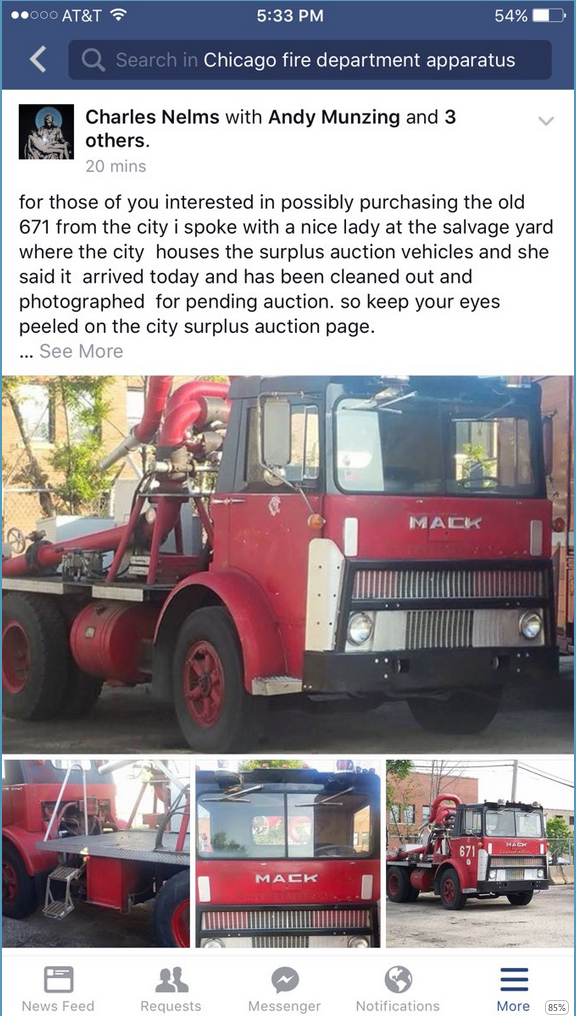
For the story of turret wagons in general, and Chicago FD Turret Wagon 6-7-1 in particular, check out the fantastic collection of posts at chicagoareafire.

Since then I've learned that it is a 1975 Mack Turret Wagon equipped with "twin stang hydraulic high pressure deluge monitors capable of flowing 20,000-gpm." That is serious water flowing.

Then I found out that it was placed permanently out of service in 2011, and auctioned off in February, 2016.

For the story of turret wagons in general, and Chicago FD Turret Wagon 6-7-1 in particular, check out the fantastic collection of posts at chicagoareafire.
Thursday, October 13, 2016
Three-Wheeler Thursday 10/13/16
A Tale of Two Motorettes.
The first is the Motorette as made by the C.W. Kelsey Manufacturing Company out of Hartford, Connecticut from 1910 to 1912.
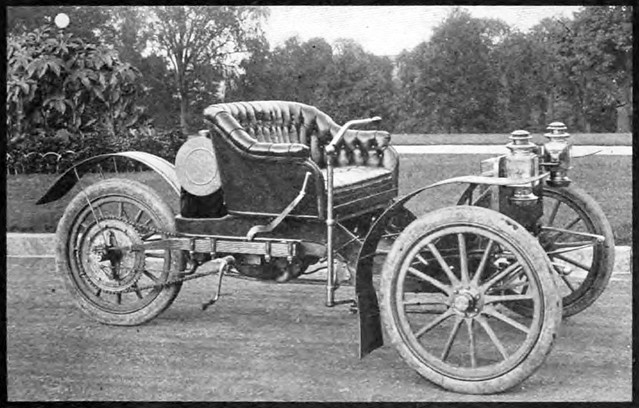
From the September 15, 1910 edition of Motor Age magazine
- - -
And the second is the one made by The Motorette Corporation of Buffalo, New York from 1946 to 1948.
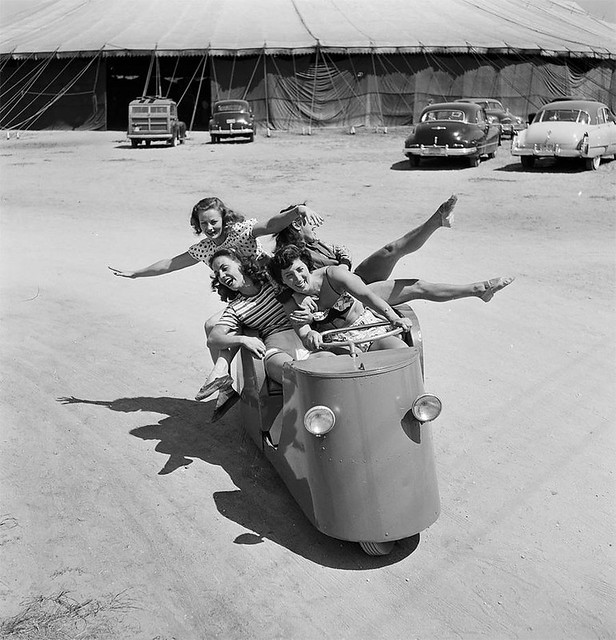
Photo by Nina Leen for LIFE magazine, 1949
The first is the Motorette as made by the C.W. Kelsey Manufacturing Company out of Hartford, Connecticut from 1910 to 1912.

- - -
And the second is the one made by The Motorette Corporation of Buffalo, New York from 1946 to 1948.

Monday, October 10, 2016
Friday, October 7, 2016
Thursday, October 6, 2016
Wednesday, October 5, 2016
Subscribe to:
Posts (Atom)

